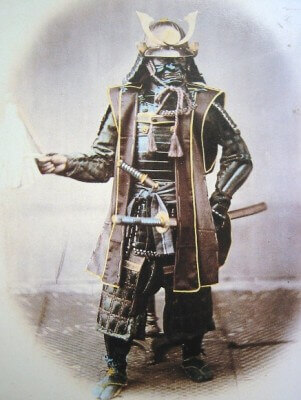
1. One Who Serves
The word Samurai, translated literally, means this, and it is something that the Samurai warrior would live by. Samurai were originally known as horse riding archers but evolved over time to focus more on melee combat and sword fighting.
2. Samurai Start Small
Starting at a young age, some only 5 years old, and the sons of noble families would begin their training to become a Samurai. These children would begin with training martial arts, practicing to perfect basic moves before moving on to the next lesson.
3. Samurai Did Not Go To School
If the noble family were wealthy, the son would be sent to a school for other basic education in addition to Samurai activities. For most families, their father, uncle or even older siblings often taught the children.
4. Samurai Hope To Die
Having a sword and armor does not make a Samurai. Samurai are ingrained with training that dictates their every action, their loyalty is fierce and Samurai make every intent to serve their masters, even if it means death. Dying at the command of your master provides Samurai with great honor.
5. Samurai Have Unique Armor
A Samurai’s armor, also called lamellar armor, is the one that represents the most iconic image of a Samurai warrior in most people’s minds. This type of armor is made by building metal scales, and binding them with leather cord. The scales are laid over one another and are waterproof. Two types of lamellar armor were created, Yoroi for mounted samurai, and Do-Maru for foot soldiers.
6. Samurai Wear Kimonos
They are more commonly associated with the Japanese Geisha and females of this period, but Kimonos were an important part of a Samurai’s armor. Before a samurai could wear his armor, he would have to put on his own Kimono and pair of pants. These items keep the distinctive samurai armor from rubbing against the warrior’s skin, chafing, or pinching.
7. Samurai Have Many Swords
One of the most popular items regarding a Samurai is his weapon. The Katana, a curved sword that is unique to Samurai fighting styles, is never worn without its partner, the wakizashi blade. The Waskizashi blade is a shorter version of the katana, used in deadly combinations. Some of these weapons were purported to be so sharp, that they could slice a human being in half with a single blow.
8. Samurai Used Guns
While the iconic image of a Samurai contains a katana as the primary weapon, it was not long into the 16th century that European traders began coming to Japan, and selling their own weapons; guns. Soon, the Samurai and other Japanese began to disassemble the weapon in order to begin mas producing it. Although guns are not typically associated with Samurai warriors, they did have a large impact on subsequent wars and battles.
9. Samurai Ceremoniously Commit Suicide
Seppuku, a form of honor bound suicide, was a common retaliation for a samurai who had been shamed of his honor or failed to serve his master. There are proper garments and an entire ceremony involved for those Samurai who felt it was a necessity to commit Seppuku for the acts they had committed. Seppuku is performed by using a special katana to disembowel oneself. Some Samurai were granted an instant death by beheading after the ritual Seppuku was complete while others were left to die slowly, disemboweled by their own hand.
10. There Are Samurai Women
Although the word samurai is a masculine word in the Japanese language, it was common for Samurai men to train women just as they were, to fight alongside them in battle, and to receive similar training for battle and martial arts. Thanks to DNA testing of the remains left at the sites of many great Samurai battles, we know now that while it would seem a minority of Samurai were women, the number is actually closer to one third.

i hate this page